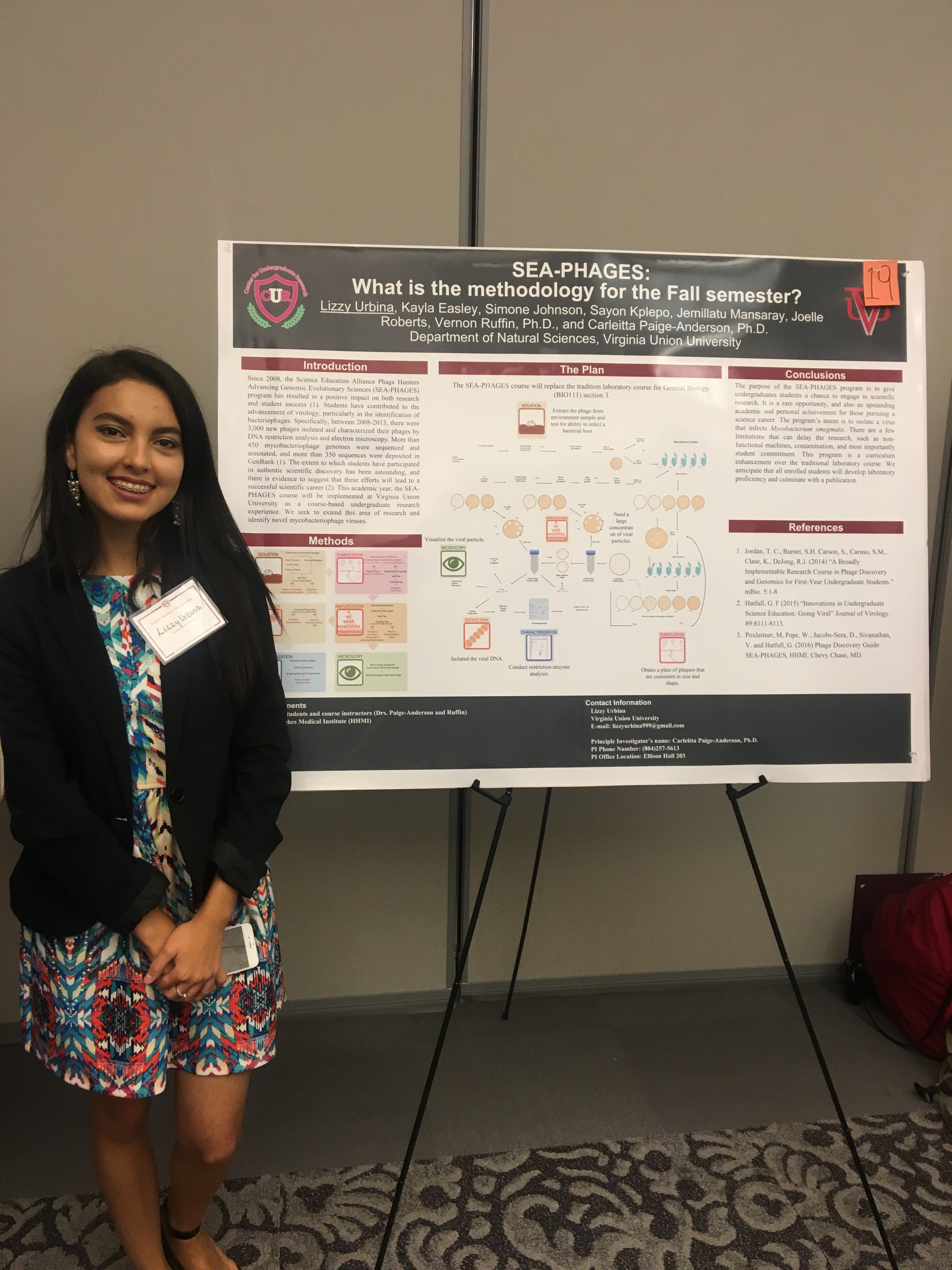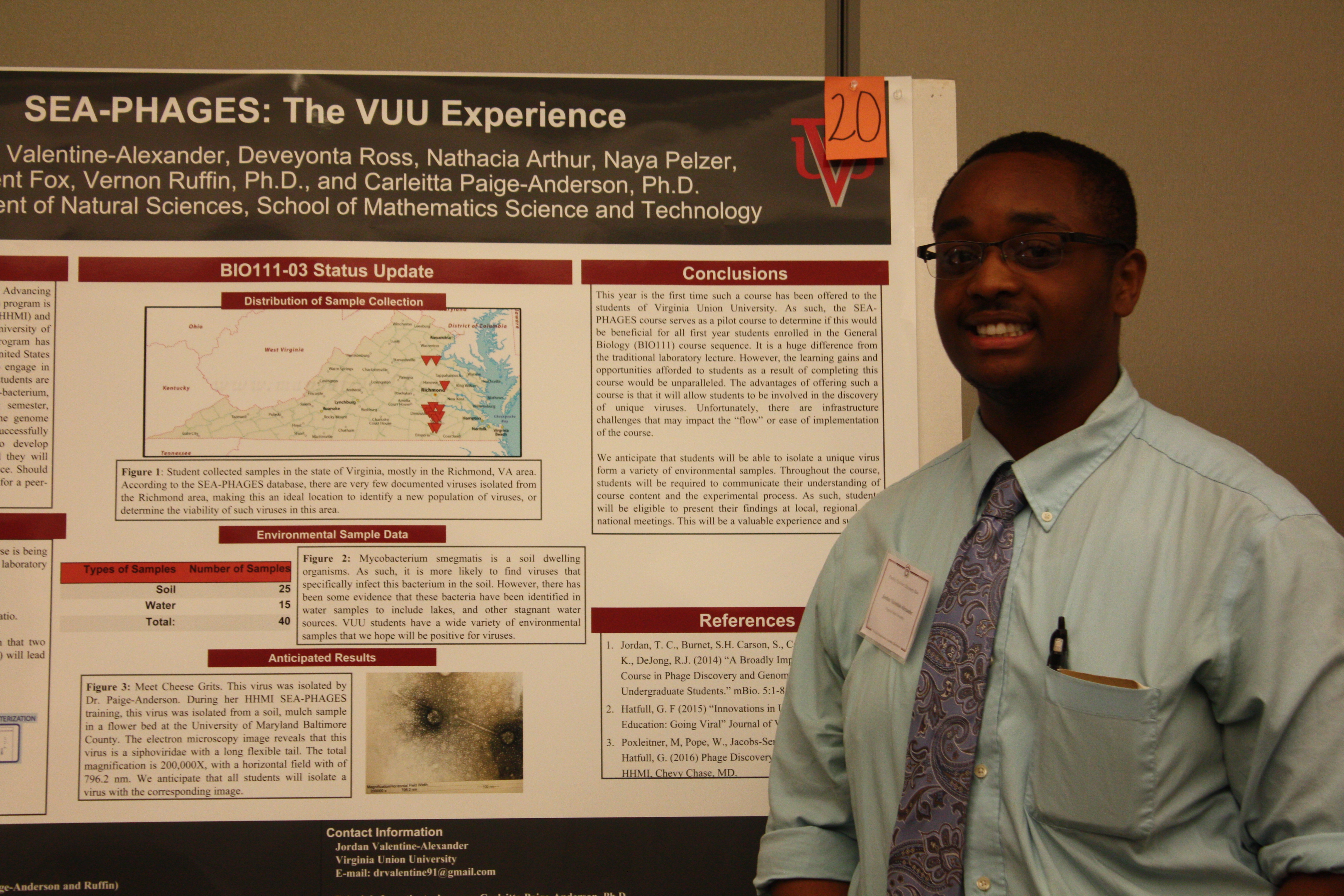Below is a summary of the abstract you submitted. Presenting author(s) is shown in bold.
If any changes need to be made, you can modify the abstract or change the authors.
You can also download a .docx version of this abstract.
If there are any problems, please email Dan at dar78@pitt.edu and he'll take care of them!
This abstract was last modified on May 8, 2017 at 4:11 p.m..

During the 2016-2017 academic year, the Howard Hughes Medical Institute’s Science Education Alliance - Phage Hunters Advancing Genomics and Evolutionary Sciences (SEA-PHAGES) course replaced one section of the traditional General Biology laboratory curriculum at Virginia Union University (VUU). Specifically, in Fall 2016, twenty students collected 40 environmental samples (both soil and water) from Central and Northern Neck, Virginia. Utilizing the bacterial host Mycobacterium smegmatis mc2 155, a total of 11 phages were isolated, 2 via direct isolation and 9 via enriched isolation. One representative from either isolation protocol (2 total) was selected for purification and characterization. Kanely was identified through the direct isolation method from a Champlain, VA soil sample, and Big3, another soil sample, was identified by enriched isolation from Richmond, VA. Each phage was visualized via electron microscopy exhibiting a Siphoviridae morphotype and following DNA extraction, was characterized using restriction enzyme digestion and agarose gel electrophoresis. Kanely and Big3 genomes were sequenced at the University of Pittsburg. In Spring 2017, the SEA-PHAGES class worked to annotate the genomes of both phages utilizing DNA Master genome analysis software and bioinformatics tools (including NCBI BLAST, Conserved Domain Database (CDD) and HHPred) to determine putative protein function. Both, Kanely and Big3 are members of Cluster A, and A1 sub-cluster. Kanely is 52,539 bp in length and predicted to have 93 genes, whereas Big3 is 53,442 bp in length and has 90 predicted genes. Overall, the SEA-PHAGES course-based undergraduate research experience has provided an opportunity to successfully implement an authentic research opportunity to first year students.


